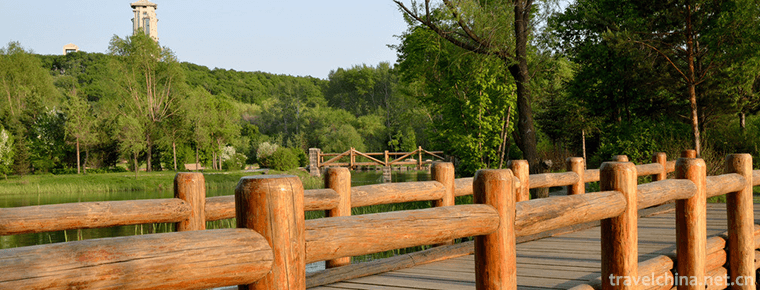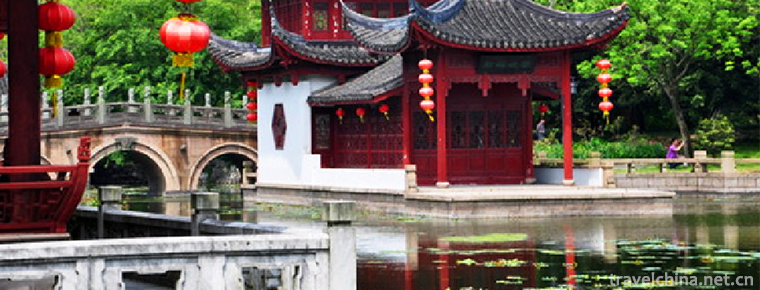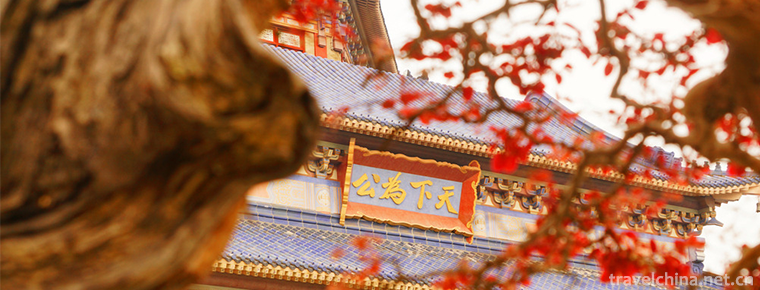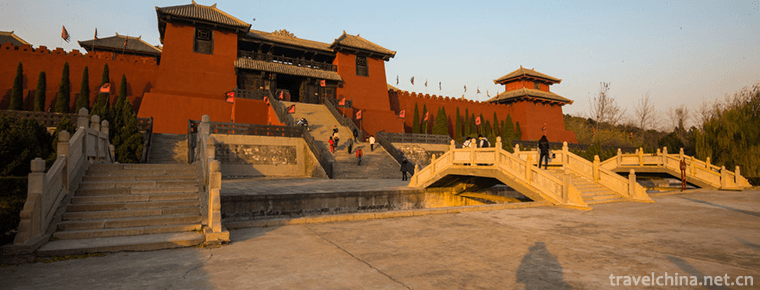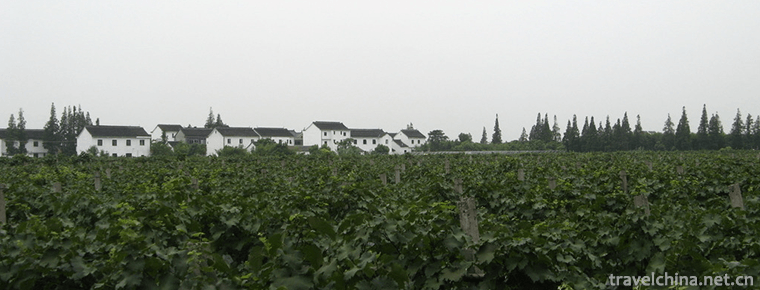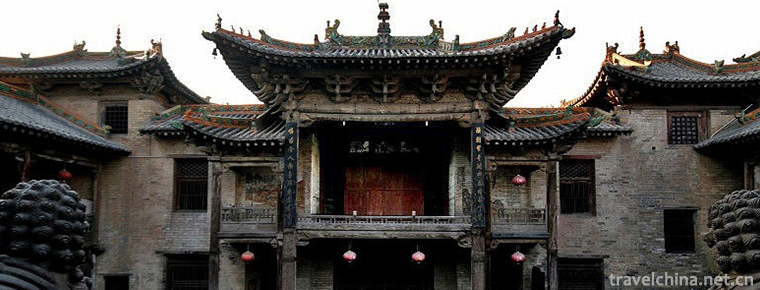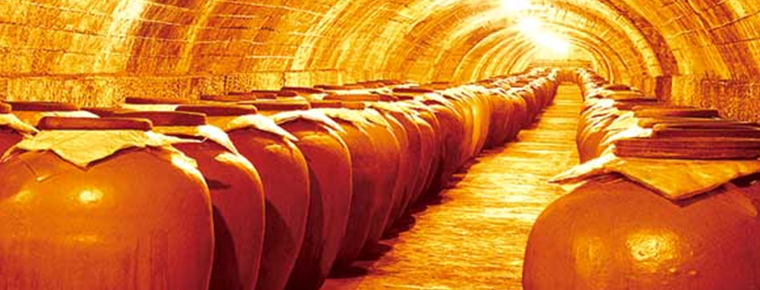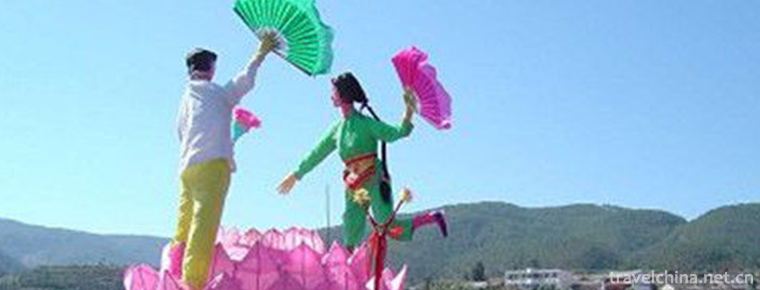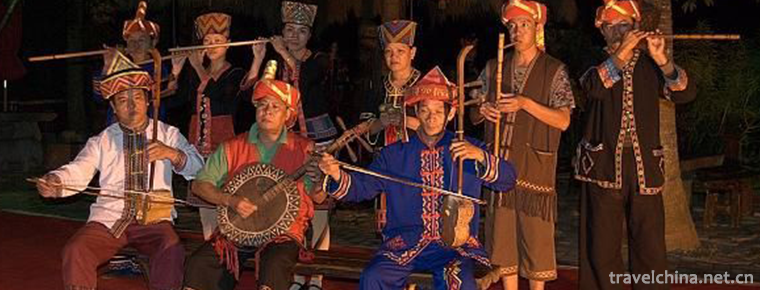Auspicious gongs and drums in southern Shanxi
Auspicious gongs and drums in southern Shanxi
Weifeng gongs and drums in southern Shanxi are folk traditional percussion music which was born and popular in Linfen area of Shanxi Province. The first batch of them were selected into the national intangible cultural heritage list. Because of its variety and majesty, it is called "prestigious Gong and drum". Every New Year's Day, festive harvest, rallies and parades, it will appear in the folk. Weifeng Gong and drum is an ancient traditional folk art form. This form of Gong and drum performance began in Yao and Shun times, and has a history of more than 4000 years. Auspicious gongs and drums are simple, elegant, pure and bodybuilding. They contain strong artistic charm and appeal. They are classics of Chinese drum music and have aesthetic characteristics of form, sound, music and performance. In the development of history, we have absorbed the essence of drum music in different times, and finally developed into the "first drum in the world", which we see today is magnificent, impassioned, bold and bold, and vigorous.
Weifeng Gong and drum in southern Shanxi is a local traditional percussion art form played by gong, drum, cymbal and cymbal instruments in Linfen area. Weifeng gongs and drums are mainly distributed in southern Shanxi, especially in Huozhou, Hongdong and Fenxi counties of Linfen City. Because of its thunderous drums, clear cymbals, gongs, boring, awe-inspiring, so called awe-inspiring gongs and drums. Huozhou is also the hometown of the prestigious gongs and drums. The prestigious gongs and drums in Huozhou have the reputation of "the first drum in China".
On May 20, 2006, Weifeng gongs and drums in southern Shanxi were listed in the first batch of national intangible cultural heritage list with the approval of the State Council.
historical origin
origin
Weifeng Gong and drum performance began in Yao and Shun times. Emperor Yao allowed his two daughters, Emperor E and Nvying, to be Shun's wives. From their second daughters, they took the Wan'an village where Fu Shun lived as their mother-in-law, and the Yangmo village where Father Yao lived as their mother-in-law. Every year, on the eighth day of April in the lunar calendar, when Emperor E and Nvying return to their mother's home, the tribesmen of Wan'an Village beat gongs and drums to send off, and the tribesmen of Yangbo Village beat gongs and drums to welcome them. After thousands of years of spreading, this ceremony has evolved into today's prestigious gongs and drums. In Linfen area, there are almost all prestigious gongs and drums teams in big villages, with as many as hundreds of large gongs and drums teams.
Linfen City, the ancient capital of Yao and known as Pingyang, is one of the birthplaces of the splendid culture of the Chinese nation for 5000 years. As a kind of traditional Gong and drum art, Weifeng Gong and drum not only has a long-term historical origin, but also has a broad mass base in Linfen. The earliest name of Weifeng Gong and drum is "gong and drum", commonly known as "gu". The origin of Weifeng Gong and drum is Xia Tuanbai Village at the junction of Fen and Huohong Counties. It mainly distributes in Linfen City, Huozhou, Hongdong and Fenxi Counties. In the long development process, prestige and gongs and drums draw on the essence of art in different times to make themselves perfect. There are two main forms of prestigious Gong and drum performances, one is drum-carrying performance. Most of Pingyang is performed by drummers beating a round drum. The other is shelf drum, which is mainly prevalent in Fushan County. There are fewer changes in team formation during the performance and beating while walking. Owing to the change of inheritance and regional differences, Weifeng gongs and drums formed two schools in Hedong and Hexi.
Development
After the founding of New China, Weifeng gongs and drums have made great progress. The number of performers has increased to tens or even hundreds. The allocation of musical instruments is still the largest gongs, followed by drums, cymbals and cymbals, with the lowest number of cymbals, which is roughly 14, 8, 6 and 4. The basic form of performance is the alternation of gongs, cymbals and cymbals, from which drums play a connecting role. During the performance, the troop is arranged into square arrays, circles or plum blossom arrays. The drummer carries flat drums, and two drumsticks are embedded with red syntheses. In the gap of hitting hinges, the stunts of single, double, alternating and throwing drumsticks can be achieved. The Gong hand holds the mallet with red hairs embedded in the middle and both ends, and beats the gong with a roundabout mallet or a throwing mallet. At the climax, the cymbal clapper holds the cymbal over his head, turns his wrist 45 degrees after the collision, and then turns his wrist again, so that the cymbal keeps turning. The red and yellow silk cloth decorating the cymbal bowl keeps flying, which closely corresponds to the gongs and drumsticks inlaid with red tapestry, and is very spectacular. The clothes we wear do not pursue small decorations, but focus on large areas of color, so as to form a block combination of the overall team.
In 1988, the prestigious gongs and drums team of 300 people from Huoxian County (now Huozhou City) performed brilliantly at the opening ceremony of the First National Peasant Games in Beijing.
In 1989, the Weifeng Gong and drum team in Linfen participated in the performance of literature and art on the 40th anniversary of the National Day in Tiananmen Square - the shooting of the large-scale literary and art program "I Love You, China" organized by CCTV.
In 1990, the prestigious gongs and drums team, composed of 410 people, first performed at the opening ceremony of the Asian Games held in Beijing. It has a grand lineup, a neat line, a stern style and a magnificent momentum. It shows the Supreme position, majesty, perseverance, bravery and tenacious national character of the Chinese children.
Inheritance significance
The prestigious gongs and drums in southern Shanxi are praised as "the first drum in the world". They have many social functions and are endowed with unique natural characteristics. They are magnificent, generous, bold and magnificent. Qupai performances mostly express the theme of eulogizing people's lives by borrowing things to express their aspirations and feelings. The skillful performers record the familiar scenes, events, sounds and current interests of the masses through the popular image of gongs and drums performing art, which sounds people's hearts and triggers a high degree of resonance. As a leader of traditional folk art, prestigious gongs and drums are of great aesthetic and artistic value, integrating music, dance and skills.
The era is blessed with powerful gongs and drums. In the late 1980s, in just a few years, he participated in many important performances throughout the province, nationwide and worldwide. It has greatly promoted the reform and development of prestigious gongs and drums, reached a qualitative leap, and evolved into a new look today. It has three performances in Beijing and has a great reputation. One was the video performance of "I Love You - China" at Tiananmen Square in 1988, the first peasant sports meeting in China, and the other was in Tiananmen Square in 1989 to celebrate the 40th anniversary of the National Day. Another was in 1990, at the 11th Asian Games, which attracted worldwide attention. Three performances shocked the capital, the whole country and friends from all over the world. The prestige of gongs and drums has become an art form representing the prestige of the Chinese nation. Chinese and foreign cultural celebrities and journalists have contributed and commented one after another, praising the prestigious gongs and drums as "the excellent cultural heritage of the Chinese nation's tradition", as "the first national drum music in ancient and modern times at home and abroad", as "the soul of the Yellow River", "the treasure of astonishing the world", "the first drum in China" and "the first drum in the world".
Vigorous gongs and drums combine music rhythm, dance and skills. The performers'strong and vigorous posture, bold and bold style and vigorous momentum reflect the bold and unrestrained character of the men in the north of the Loess Plateau. Chinese traditional art treasure house in the boutique, many times at home and abroad in large-scale celebrations, won awards, shocked the world. The historical inheritance, content and form of expression of prestigious gongs and drums is one of the important subjects concerned by history, sociology, folklore, aesthetics and other disciplines. The track of its historical evolution reflects the development process of the Chinese traditional ideology and aesthetic consciousness, and the development of its artistic form reflects the characteristics of the Northern Nationality and the ideal pursuit of unity and harmony.
For a long time, "Weifeng Gong and drum" has been very popular in the local area. Its scope of use has also been extended from the activities of sacrificing and remembering ancestors in the past to the daily marriage and festival celebrations. Sometimes when winter falls idle, people also have to play gongs and drums in high spirits to celebrate the harvest. Therefore, "Weifeng Gong and drum" has become an important form of mass culture for people's growing cultural needs. Not only the villages, but also the foreign ports sometimes come to invite them to participate in festive and ritual activities, so as to enrich the cultural life of the people, improve the quality of the people, promote their all-round development and build a society in the village (Tun) and even in Liuzhou area. New socialist countryside will play an important role. Since 1988, Shanxi's prestigious gongs and drums from the Agricultural Games to the Asian Games, from the provincial folk art festival to the fortieth anniversary of Tiananmen Square, have really played the prestige of Shanxi's folk art, enjoying a national reputation and world-wide reputation.
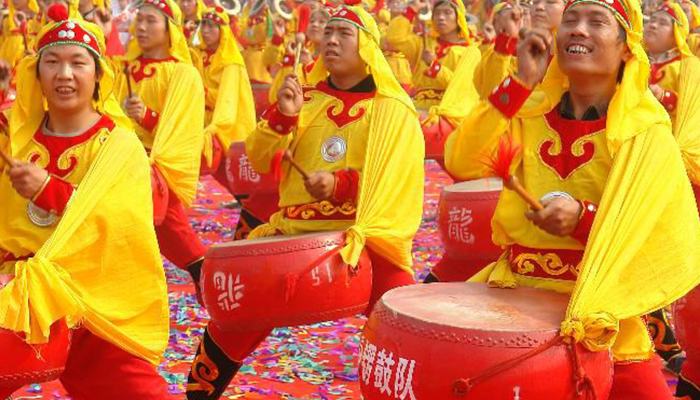
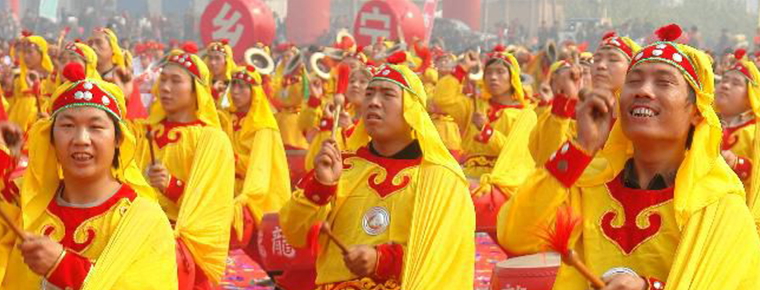
Auspicious gongs and drums in southern Shanxi
-
Jingyuetan National Scenic Area
Jingyuetan, National AAAAA Class Tourist Scenic Spot, National Scenic Spot, National Forest Park, National Civilized Scenic Spot Demonstration Site, National Water Conservancy Scenic Spot
Views: 246 Time 2018-12-05 -
The Grand View Garden Area of Shanghai
Shanghai Grand View Garden is located at 701 Qingshang Highway, Qingpu District, Shanghai. It is situated on the west side of Dianshan Lake, 65 kilometers away from downtown Shanghai.
Views: 183 Time 2018-12-19 -
Sun Yatsen Memorial Hall
Zhongshan Memorial Hall is located in Dongfeng Middle Road, Yuexiu District, Guangzhou City, Guangdong Province. It was built by the people of Guangzhou and overseas Chinese to commemorate Dr. Sun Yat
Views: 160 Time 2018-12-22 -
Jiaozuo Film and Television City
Jiaozuo Film and Television City, located in Jiaozuo City, Henan Province, is a large-scale comprehensive tourist area with film and television shooting services as the main function
Views: 113 Time 2019-01-22 -
Malu Grape Theme Park
Malu Grape Theme Park is located in Malu Town, Jiading District, Shanghai. It is a grape industry base and agricultural tourism demonstration site that integrates grape planting, production, scientifi
Views: 131 Time 2019-02-06 -
The Story of Guangchan Marquis
The story of Guangchan Marquis refers to a local folklore widely circulated in Yangcheng County, Jincheng City. Guangchan Marquis refers to an ordinary folk veterinarian in the Northern Song Dynasty
Views: 169 Time 2019-05-01 -
Brewing Techniques of Luzhou Laojiao Liquor
Luzhou Laojiao Liquor Brewing Technology, Luzhou City, Sichuan Province, the local traditional handicraft, one of the national intangible cultural heritage.
Views: 169 Time 2019-05-15 -
Midu folk songs
"Midu Folk Song" is the general name of the Han and minority folk songs in Midu County, Yunnan Province. Midu folk song is a multi-cultural complex system, which is the convergence and cohes
Views: 142 Time 2019-06-04 -
Yazhou Folk Songs
Yazhou folk song is one of the ancient folk songs in Hainan Province. It is popular in the areas of Yazhou and Dongfangkangcheng, west of Sanya Yacheng and east coast of Ledong. Yazhou Guest (Han) dia
Views: 201 Time 2019-07-10 -
Suining social security
By the end of 2019, there were 23400 registered unemployed people in Suining, with the registered unemployment rate of 3.62%. 855000 people participated in the basic endowment insurance for urban employees, an increase of 114800 over the end of last year.
Views: 132 Time 2020-12-16 -
Hydrology of Neijiang River
Tuojiang River is the main river in the urban area. It flows through Zizhong, Dongxing and Shizhong District. It is the main waterway transportation route in the city. Since ancient times, there has been a busy scene description of "boats of ten thousand trees
Views: 309 Time 2020-12-16 -
Dazhou Education
In 2019, there are 1455 schools of all kinds in Dazhou. Among them, there are 283 primary schools, 397 ordinary middle schools, 2 ordinary colleges and universities, 33 secondary vocational education schools and 1 adult higher school. There are
Views: 214 Time 2020-12-20
